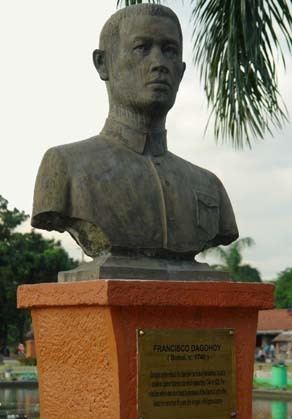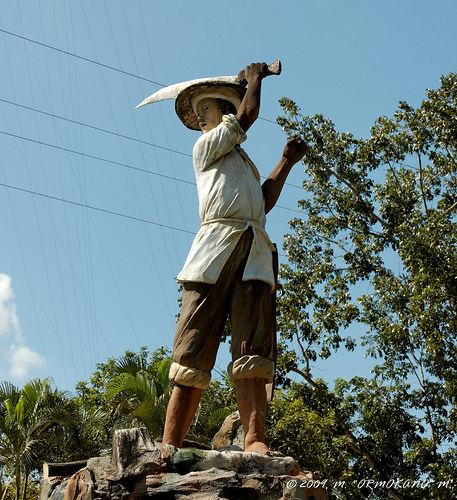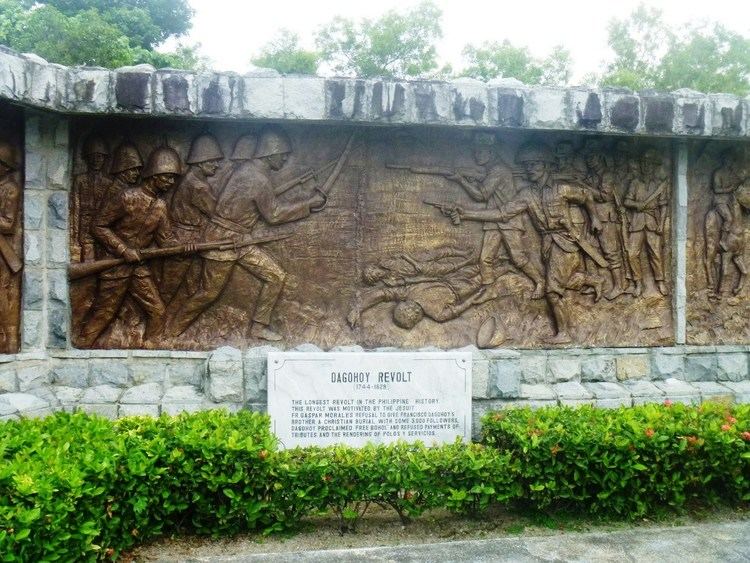Dates 24 Jan 1744 – 31 Aug 1829 | ||
2,200 soldiers 3,000-20,000 followers (in 1744) Unknown 19,420 surrendered, 395 died in battle, 98 were exiled Results Spanish victory, Pardoned 19,420 survivors and permitted them to live in new villages at the lowlands Similar Philippine revolts against S, Negros Revolution, Brunei Civil War, Castilian War, Battles of La Naval de Manila | ||
The famous Dagohoy Rebellion, also known as Dagohoy Revolution or Dagohoy Revolt, is considered as the longest rebellion in Philippine history. Led by Francisco Dagohoy, also known as Francisco Sendrijas, this rebellion took place in the island of Bohol from 1744 to 1829, roughly 85 years.
Contents

It was one of two significant revolts that occurred in Bohol, Philippines during the Spanish Era. The other one was the Tamblot uprising in 1621 led by Tamblot, a babaylan or native priest from Bohol which was basically a religious conflict.
Dagohoy's Legacy

The Dagohoy rebellion features in the Bohol provincial flag as one of the two bolos or native swords with handle and hand-guards on top. These two bolos, which are reclining respectively towards the left and right, depict the Dagohoy and Tamblot revolts, symbolizing that "a true Boholano will rise and fight if supervening factors embroil them into something beyond reason or tolerance."

Dagohoy is an important figure Philippine history, not only as dure to his reputation as good brother and a heroic man, but also as a leader of the longest Filipino insurrection on record. His revolt lasted 85 years (1744–1829).

The town of Dagohoy in Bohol is named in honor of Francisco Sendrijas, also known as Dagohoy. It was Vice President Carlos P. Garcia who proposed naming the town after Dagohoy. The name "Dagohoy" derives from the Visayan phrase "Dagon sa huyuhoy," which translates to "talisman of the breeze" in English. This naming honors Dagohoy's significant historical legacy in the region.
The Dagohoy Memorial National High School in Dagohoy, Bohol is also named in his honor and memory.
